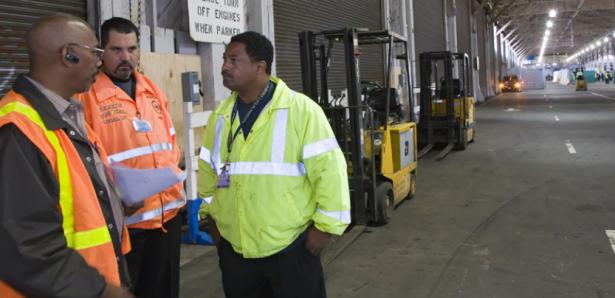The difference between a truly democratic union and one that follows a servicing model is stark when it comes to grievance handling. In a strong democratic union there may not even be many grievances; members organize to convince supervisors to stop violating the contract without having to use the formal procedure.
A BATTLE FOR EVERYONE
In the servicing model, the member is not encouraged to get involved but to turn the grievance over to the “expert.” Even in unions that seek member mobilization, the service model of grievance handling prevails: members may be mobilized to act for certain grievance issues, but they take no leadership role—no responsibility or initiative.
But a different approach is possible:
1. Get the grievant(s) directly involved. Let the member carry the grievance as far as possible. In many contracts it is possible for the member to initiate and write the first-level grievance. Train the members to write their own grievances and to do the research that makes the grievance winnable. The stewards then become the advisers and trainers, not simply grievance filers.
As the grievance goes through the procedure, the member should participate in planning the case, talking to witnesses, talking to other members about what’s going on. Where it is not possible for a member to be present at meetings with management, make sure the member is consulted about each decision and notified immediately of any changes or progress.
2. Involve other members in winning the grievance. Wherever possible, make the content public. While there may be privacy issues here, it should be possible to at least list the type of grievance and chart its progress.
One of management’s attacks on unions is to try to divide the “5 percent who have grievances and need the union” from the 95 percent who presumably never have trouble and therefore do not need the union.
Making grievances public helps drive home the point that a member’s grievance is a battle for everyone, not only in the sense of general solidarity and “it could happen to you,” but in the sense that grievance results define the meaning of workplace rules. It also brings the membership into discussions of how well grievances are being handled.
If the grievance clearly and directly affects others, make it a group grievance, with as many signers as possible. Get signers together to work on gathering information and support. Having more people involved will generate pressure on management beyond the formal grievance system.
While some grievants prepare the case, others can be distributing information and buttons, urging co-workers to bring up the topic when a manager stops by their cubicles, or bugging managers themselves.
NO NECKS STUCK OUT
Some unions use a “wheel signature” for group grievances and petitions. On the paper, the signature lines are like spokes around a hub—no top and no bottom—and people sign anywhere they want. The idea is to make all signers equal, either to share credit or to prevent the employer from singling out the originators.
To make membership initiative a reality in handling grievances, union reps and stewards need the same leadership qualities we look for in top leaders: ability to share authority with others, to train others and share credit for union wins, and to delegate tasks and support others if they make mistakes.
Excerpted from Democracy Is Power: Rebuilding Unions from the Bottom Up by Mike Parker and Martha Gruelle. Buy the book for $10.
A version of this article appeared in Labor Notes #480. Don't miss an issue, subscribe today.


Spread the word